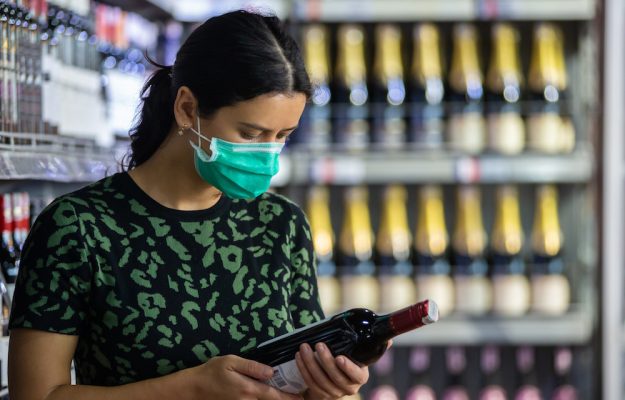Analyzing the United States market and the evolution of its typical consumer is a hypothetically endless process, because there are continuous changes. The social, cultural, economic and anthropological aspects are evolving rapidly, and getting to know them, especially for the wine sector, (whose number one commercial outlet outside of Italy is the United States), is of capital importance. Every year, Wine Intelligence publishes its report, “US Wine Landscapes”, which outlines the profile and changes in the American wine market and of its wine lovers. First of all, the number of those who drink alcohol in the US has remained substantially stable, from 2018 to today, increasing slightly from 239 to 241 million consumers. On the other hand, the number of wine drinkers - that is, those who drink wine at least once a year – has grown by 10 million, increasing from 108 to 118 million people. However, the number of those who drink wine regularly - at least once a month - has decreased by 7 million people, tumbling from 84 to 77 million. These figures suggest that wine drinkers who are approaching the market are less passionate as well as less loyal, and are therefore more likely to drink wine only occasionally. On the demographic side, in 2017, wine lovers in the US were mostly women (52%), while now the situation has reversed, and more men (51%) drink wine regularly. This could be due to the fact that more and more men are approaching wine or, that instead, there is an ongoing distancing of women consumers. And, over the same period, there has also been a major change in the relationship between wine lovers and earned income. The percentage of high-income wine drinkers has increased considerably, especially those people who earn more than 80.000 US dollars a year, representing 28% of all wine lovers; whereas, the percentage of wine drinkers whose household incomes are between 40.000 and 80.000 US dollars has gone down from 35% to 31%. As far as age groups are concerned, the weight of the Millennials is growing, as the 35-44 age group now represents 20% of habitual wine drinkers, compared to the just under 65 (22%) and the 25-34 year olds (21%).
The frequency with which wine has been consumed has increased substantially since 2019 because older aged consumers have been enjoying opportunities to be able to drink multiple times a week, more than the US average. In addition, opportunities to consume wine prior to the Pandemic averaged 9.3 per month, and instead during the Pandemic they reached 11.1 in August 2020. Men have headed this increase (15% versus 13%), particularly those who are high earners, and 17% of that group that have an income over 150.000 US dollars drink almost every day, against the average 13%. This increase, though, seems to have come back closer to pre-Pandemic levels since October 2020, because consumers are now getting accustomed to the new normal.
Older age group drinkers are driving the frequency of wine consumption while younger wine lovers are the most curious, and they are the most likely to be very much involved in wine consumption. Younger drinkers are also more likely to try new and different styles of wine on a regular basis. Wine drinkers aged over 55 instead are definitely less likely to explore new styles, since 47% of those over 55 years old say they know what they like and are inclined to follow their own convictions and preferences. Conversely, only 13% of wine lovers between 21 and 34 years old do the same. From 2017 to today, US wine drinkers are spending more per bottle of wine on away from home wine consumption occasions. This decline in consumption by volume, however, following years of steady growth, suggests that the United States is experiencing a crucial moment of cultural and lifestyle change. Moreover, the changes in spending in the off premise channel are not reflected in the on premise channel, suggesting that, as lifestyles change, the consumption of wine away from home is shifting to high-end wines, after the initial shock due to the Pandemic. But consumers are also prone to shifting their wine budget away from home to home consumption.
Trust in wine is growing (+ 0.1%) in the consumers’ perception. At the same time, since 2017 the index of wine knowledge among those who drink has tumbled (-7.5%). This dynamic takes into consideration a broader global trend, possibly due to broader access to information through wine apps and online, which is a process known as “cognitive off-loading”. Even in the top 10 of the most well known territories, everybody is losing percentage points - Italy is behind California, followed by France, Spain, and other Regions in America, Australia, Argentina, Chile, Portugal and Germany. The same dynamic, in other words, the decline in awareness and knowledge, has also been registered among the most well-known brands, and the top ten are: Barefoot, Yellow Tail, Sutter Home, Gallo Family Vineyards, Woodbridge, Cupcake, Franzia, Beringer, Robert Mondavi, Carlo Rossi.
Finally, drinking red wine has been growing over this period among consumers in the United States. In 2020, 79% of drinkers consumed red wine compared to 72% of those who drank white, followed by beer (61%), vodka (47%) and whiskey (41%). Some of the favorite varieties of red wines are Merlot, Cabernet Sauvignon, Pinot Noir and Zinfandel in the lead, and among the preferred whites there are Chardonnay, Pinot Grigio, Sauvignon Blanc, Moscato and Riesling. Lastly, some of the favorite shopping channels frequented: supermarkets, liquor stores, superstores, club stores and wine bars.
Copyright © 2000/2025
Contatti: info@winenews.it
Seguici anche su Twitter: @WineNewsIt
Seguici anche su Facebook: @winenewsit
Questo articolo è tratto dall'archivio di WineNews - Tutti i diritti riservati - Copyright © 2000/2025








































































































































































































